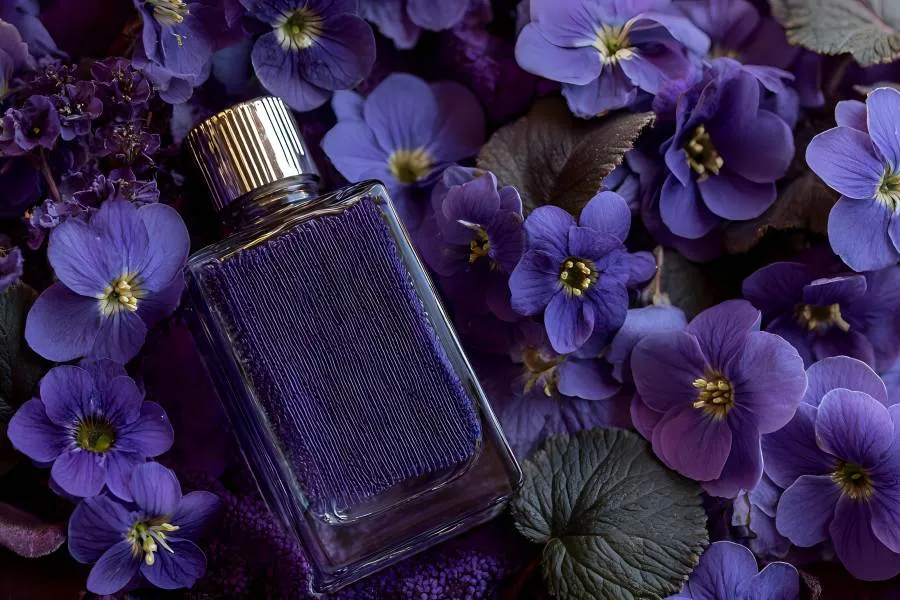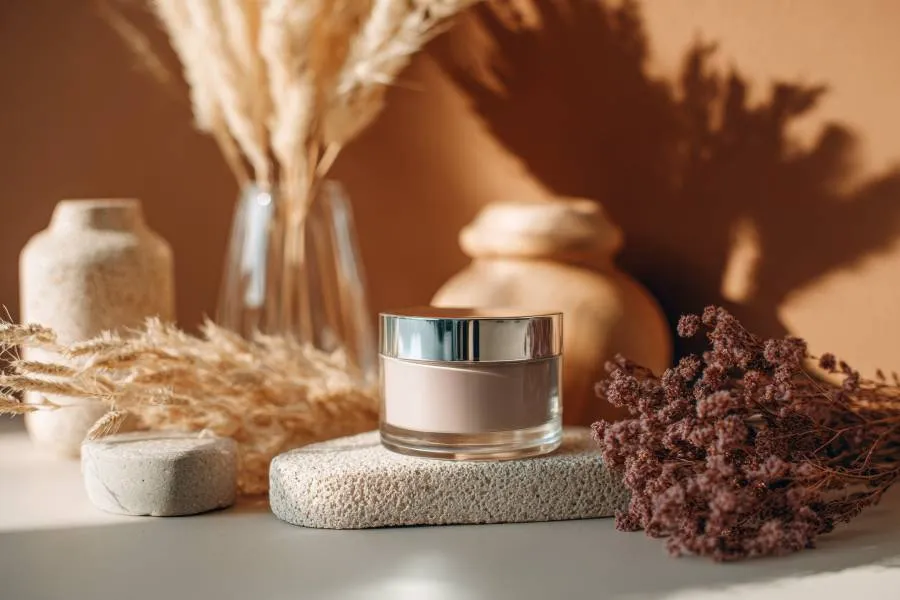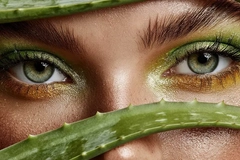Herbal beauty trend reshapes industry as consumers seek fast results and supply chain transparency
Key takeaways
- The industry is observing a rising demand for natural personal care, accompanied by strong expectations for sustainability and transparency.
- Social media drives desire for fast, proven results and personalized formulations.
- Brands and consumers prioritize responsibly sourced, traceable, and high-performing botanicals.
Consumers are turning to herbal and natural personal care products. Given the increased role of social media in people’s lives, consumers switch between brands and expect fast results from personal care products. Younger generations are also increasingly concerned about companies’ sustainability practices when purchasing cosmetics, putting pressure on the industry to be transparent throughout the supply chain.
We explore how the surge in herbal and natural beauty is reshaping the personal care industry, driving demand for fast results, proven efficacy, and fully traceable, sustainably sourced botanical ingredients.
“If a natural ingredient proves to be efficacious, this will be appealing to the consumer, especially if compared to a synthetic or a chemical alternative through clinical efficacy,” Sophie Aksoy, technical marketing specialist at Vantage Specialties, tells Personal Care Insights.
Aksoy explains that younger consumers are eco and sustainably conscious and therefore, they seek solutions from brands and products that support local environments, economies, and communities when purchasing personal care products.
Meanwhile, data from Innova Market Insights shows a 10% year-over-year growth in herbal or botanical based personal care launches. This increase was observed between July 2023 and June 2025, with Asia being the leading region in product launches.
The global market researcher says facial and neck moisturizers was the top category, and women’s fragrances also gained ground.
“Products highlighting botanical and herbal positioning increasingly include ethical-animal and natural claims, suggesting consumer demand for cleaner, more conscious beauty formulations,” says Innova Market Insights.
Demanding fast results
The industry is shifting toward personalized cosmetic solutions, driven by the rise of social media, AI-powered technology, and increasingly sophisticated algorithms, according to Aksoy.
“Science is becoming more accessible through technology, and more discourse is happening around the personal care products we use,” she says. “Consumers are now more educated than ever on what they want to use on their skin and hair, and that it works for their specific needs or concerns.”
 Innova Market Insights says botanical women’s fragrances are gaining ground. “This also leads to consumers expecting to see results immediately. Consumers constantly want to try new products and trends with the speed at which social media and technology run,” she says.
Innova Market Insights says botanical women’s fragrances are gaining ground. “This also leads to consumers expecting to see results immediately. Consumers constantly want to try new products and trends with the speed at which social media and technology run,” she says.
Aksoy says consumers expect to see skin care results in as little as a few hours or one day, which contrasts with the industry standard of 28 or 56 days of clinical testing.
Additionally, brands are also being held to a higher standard of values and transparency than previously, especially due to the accessibility of social media.
“Consumers will take to Instagram and TikTok if they do not approve of a product or a specific advertisement. But on the flip side, this could have an immense positive impact and outreach if a campaign or product is a success, it could serve as a viral sell-out moment for a brand in a short period of time.”
Looking at formats and ingredients
Aksoy says there is a trend for Amazonian and Asian heritage products due to their efficacy, compelling storytelling on origin, and sustainability claims.
She exemplifies Natura’s products that contain tucuma or antiroba-backed ingredients. Amorepacific products often feature ginseng as the hero ingredient, and Shiseido uses camellia extract.
“Many brands are showing a comeback to ‘basic,’ which is also a comeback to ‘natural,’” she adds.
Tapping into the increased demand for natural, heritage-inspired products, Vantage Specialities launched its pure cacay oil, Lipovol Origin Cacay, earlier this year.
Cacay oil is a cold-pressed oil derived from the nuts of Cacay evergreen trees that grow along the Colombian Amazon lowlands. The oil is rich in vitamins and fatty acids, which help improve skin hydration, smoothness, firmness, and elasticity. It also provides benefits to the hair, such as thermal protection, enhanced shine, reduced frizz, and improved split ends.
The company also launched a blue-zone-inspired ingredient that taps into the prejuvenation approach to longevity-focused skin care.
“Finally connecting with the Asian medicine trend, we launched Angel Eye EFX with Angelica Root and a Chinese mushroom to increase the blood circulation in the delicate eye area, focused on prejuvenation,” says Aksoy.
Sustainable sourcing
Aksoy details the company’s fully traceable and vertically integrated jojoba oil and its derivatives, which are sourced and produced on its own farms in Arizona, US, and Argentina.
“Vantage meets high standards for farming, such as Fair For Life, and makes smart improvements to increase yield and production capacity. Jojoba is also proven to be an efficacious ingredient when it comes to skin care as it is bio-mimetic to human sebum, being a deeply nourishing ingredient for even sensitive skin,” she says.
 Younger generations highly value sustainable cosmetic products.Another example of traceable, sustainable ingredients we offer at Vantage includes Tucum-HA EFX. This is an active ingredient fusion of tucuma oil, jojoba esters, and hyaluronic acid designed for ultimate deep skin hydration and firmness.
Younger generations highly value sustainable cosmetic products.Another example of traceable, sustainable ingredients we offer at Vantage includes Tucum-HA EFX. This is an active ingredient fusion of tucuma oil, jojoba esters, and hyaluronic acid designed for ultimate deep skin hydration and firmness.
“Tucum-HA EFX is more than just an ingredient: it is a symbol of environmental sustainability and social responsibility. From the heart of the Amazon rainforest in northern Brazil, the sourcing of tucuma oil ensures the forest remains standing while also generating income through the responsible and ethical collection of fruits and seeds.”
She adds that it also enables families to sustain their livelihoods while preserving one of the most biodiverse ecosystems on the planet.
According to industry experts, the personal care industry is pushing for more responsible sourcing of ingredients. From surfactants to emollients, brands are shifting their focus to reduce carbon footprints, prevent deforestation, and ensure that raw materials originate from renewable and traceable sources.
For ingredient manufacturers, this means rethinking how products are designed, produced, and scaled — without compromising performance or profitability.
Natural ingredients and sustainability
Younger generations highly value sustainability and continuously express concerns for the environment, says Aksoy.
“Therefore, it is crucial for companies and brands to prioritize these practices when creating ingredients or products for consumers.”
She says that to ensure sustainability remains a top focus when working with natural ingredients, brands should implement robust sourcing, transparency, and community engagement practices through their manufacturing processes.
“Additionally, they should select and test natural ingredients based on proven efficacy and benefits, ensuring sustainability efforts do not come at the expense of product performance.”
Personal Care Insights recently reported on the complexity behind natural cosmetic ingredients. They require large amounts of resources, such as land and water, which complicates sustainability in the manufacturing process. Assuming that “natural equals sustainable” creates a fine line to greenwashing, and labels often mislead consumers into making unsustainable choices.
 When working with natural ingredients, ingredients must be grown using responsible farming practices that respect both the land and local communities.“Labeling a cosmetic as natural or plant-based often implies it’s eco-friendly, but this can be a form of greenwashing if the product’s lifecycle isn’t sustainable. Many brands play up buzzwords like ‘natural, organic, chemical-free, or eco-friendly’ without proof of real environmental benefits,” Thomas Collier, CEO at Levur, told us.
When working with natural ingredients, ingredients must be grown using responsible farming practices that respect both the land and local communities.“Labeling a cosmetic as natural or plant-based often implies it’s eco-friendly, but this can be a form of greenwashing if the product’s lifecycle isn’t sustainable. Many brands play up buzzwords like ‘natural, organic, chemical-free, or eco-friendly’ without proof of real environmental benefits,” Thomas Collier, CEO at Levur, told us.
“For example, a face cream might boast it contains only botanical oils, leading consumers to believe it’s sustainably made, while in reality those oils might be sourced from water-intensive crops or farms linked to deforestation.”
He stresses that highlighting “naturally derived” ingredients can distract shoppers from concerns such as high carbon footprints caused by transporting exotic ingredients or excess packaging.
Last month, EcoBeautyScore told us that the environmental impact of cosmetics is gaining increased attention, and sustainability tools previously only available to large companies are now being democratized.
“In today’s beauty landscape, transparency and traceability are no longer optional — they’re consumer expectations. People want to know what’s in their products, where ingredients come from, and how they affect the planet,” Laurent Gilbert, scientific director at EcoBeautyScore, told us.
When working with natural ingredients, Aksoy shares how Vantage Specialties ensures environmental sustainability by highlighting the cultivation processes behind Lipovol Origin Cacay.
“This ingredient is grown using responsible farming practices that respect both the land and local communities. These aspects include conservation, ethical sourcing, sustainable production, and waste minimization.”
“By integrating these strategies, brands can authentically keep sustainability at the heart of product development, benefiting both the planet and the communities involved, while also delivering natural ingredients backed by efficacy and transparency,” Aksoy concludes.














